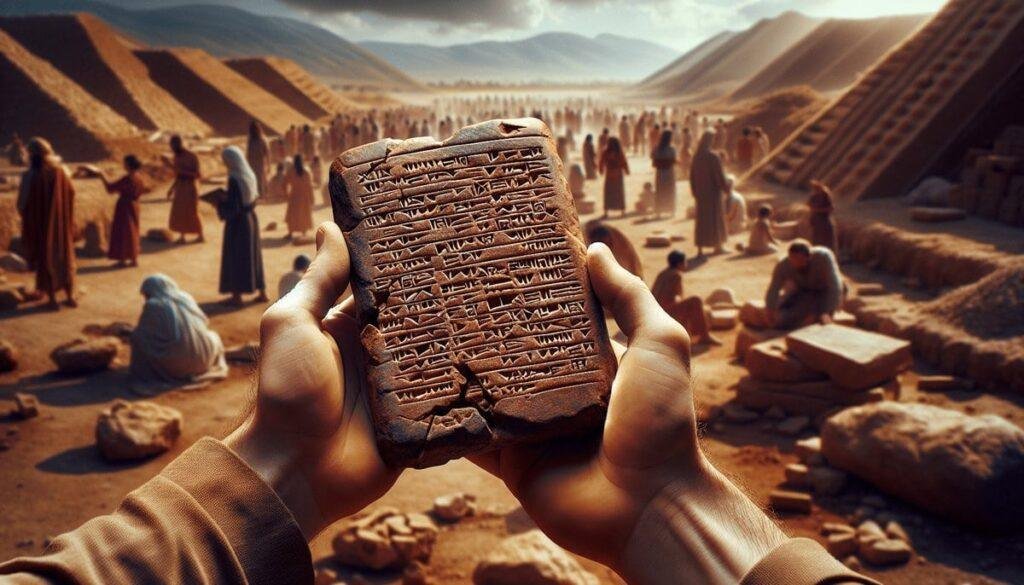Have you ever wondered how modern science validates some of the most ancient stories known to humanity? The quest for understanding our past has often led scientists and historians to draw from a variety of disciplines to weave together the narratives of our ancestors. One such compelling area is the intersection of archaeology and biblical studies, notably the role of radiocarbon dating in verifying the historical accuracy of biblical site discoveries. By carefully dissecting these revelations, you gain insights not only into the past but also into the complexities of modern scientific methods and their application to ancient texts.
Discovery Context
Biblical Reference and Importance
The interplay between biblical narratives and historical reality has fascinated both believers and scholars alike. Often, biblical texts reference specific locations and events that, until recently, lacked the solid evidence contemporary science demands. Among these is the site associated with the Battle of Lachish, a significant event recorded in the Old Testament. According to biblical accounts, Lachish was a strategic city during the reign of King Hezekiah, besieged by the Assyrian king Sennacherib around 701 BCE.
Historical Background and Geographic Location
The city of Lachish, mentioned numerous times in the Hebrew Bible, played a critical role in the defense of the Kingdom of Judah against Assyrian aggression. Geographically, it was located approximately 40 kilometers southwest of Jerusalem, a vantage point that proved crucial in historical conflicts. The site was one of the largest ancient tells (archaeological mounds) in the southern part of Israel, believed to have begun as a fortification and evolved into a thriving city before its ultimate destruction.
Recent Findings at Lachish
Recent archaeological endeavors at Lachish have unearthed a trove of artifacts, including pottery, arrowheads, and charred wood, which have been pivotal in dating the site. The most exciting breakthrough came with the application of radiocarbon dating, a technique that measures the decay of carbon-14 in organic materials, offering a reliable timeline for the city’s destruction and occupation phases. These findings align closely with biblical narratives, providing a tangible link to the stories told over millennia.
Archaeological Evidence
Specific Artifacts Unearthed
Excavations at Lachish have yielded numerous artifacts that offer a glimpse into the past’s vibrant life. Among these are ceramic vessels typical of the late Iron Age, inscribed seals, known as bullae, bearing the names of Judean officials, and remnants of fortified walls that speak of the city’s strategic significance. Arrowheads discovered at the site suggest intense military activity corresponding to the historical accounts of the city’s siege.
Radiocarbon Dating Methods
Radiocarbon dating has been instrumental in placing these artifacts within an accurate chronological framework. This method, which assesses the radioactive decay of carbon-14, is used extensively in archaeology to date organic materials such as wood, seeds, and textiles. At Lachish, radiocarbon analyses of burned olive pits and timber from the destruction layer have confirmed the siege’s timing around the end of the eighth century BCE, a period that corresponds closely with the biblical account of Sennacherib’s campaign.
Expert Interpretations
Experts in the field, such as Dr. Yosef Garfinkel of the Hebrew University, have noted the alignment between archaeological findings and biblical texts as significant. In his analysis, Garfinkel emphasizes that while not every biblical story can or should be accepted as historical fact, the validation of events such as the siege of Lachish provides a crucial bridge between narrative and history. Such evidence invites a more nuanced reading of biblical histories, recognizing them as meaningful records that blend myth, memory, and historical fact.
Significance
Biblical Implications
The radiocarbon dating of Lachish has profound implications for biblical scholarship and theology alike. It lends credence to the historical core of narratives long viewed skeptically by some. This convergence of science and ancient text demonstrates that key events in the biblical record are rooted in verifiable history, prompting a reevaluation of other biblical claims with similarly testable implications.
Historical Impact
This discovery also enhances our understanding of the sociopolitical landscape of the ancient Near East. The siege of Lachish serves as a powerful illustration of the Assyrian Empire’s might and its impact on the smaller kingdoms of the region. By confirming the historical timing and details of these events, researchers perceive a more intricate picture of power dynamics, alliances, and conflicts that shaped the ancient world.
Modern Understanding
Beyond the ancient world, these archaeological confirmations enrich contemporary discussions on the reliability and interpretation of ancient texts within a historical context. For scholars and enthusiasts alike, these findings underscore the potential for interdisciplinary approaches to unearth truths buried in history, showcasing the ever-evolving dialogue between tradition and science.
Ongoing Research Status
Research at Lachish and similar sites encourages continuous excavation and analysis. With technological advancements such as improved radiocarbon dating techniques and digital reconstruction, future discoveries may provide further insights into the close relationship between historical sites and biblical records. Scholars remain optimistic about uncovering more layers of the past, further validating and understanding the stories that have shaped human history.
Conclusion
In summary, the radiocarbon dating of biblical sites such as Lachish bridges the gap between ancient narrative and historical evidence. By confirming timelines and linking tangible artifacts to biblical records, science validates and enriches the complex tapestry of human history. As you ponder the implications of these findings, consider the potential for future discoveries that await at the intersection of archaeology and biblical scholarship. Engage with this unfolding dialogue and explore the historical pathways that define our understanding of both the past and the present.





